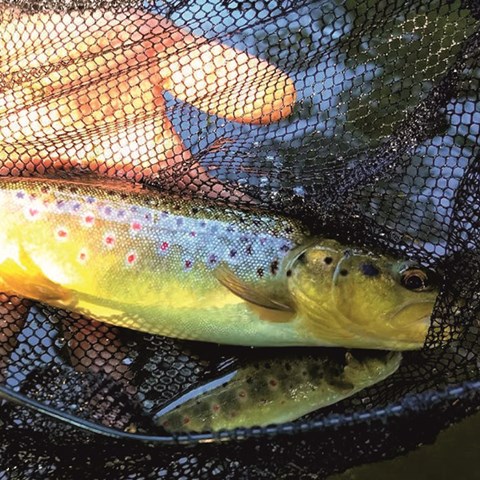Contact
Anti Vasemägi, Professor
Department of Aquatic Resources för
anti.vasemagi@slu.se, +46(0)10-478 42 77

According to a recent study, sequencing the transcriptome of the myxozoan parasite helps to find new promising drug targets to combat proliferative kidney disease (PKD) in salmonids.
In the world of parasites, the smallest ones often expose the heaviest burden on the host. Over millions of years, parasites have successfully tricked the immune defence of the host, enjoying the free feast at the expense of the host. One of such miniature freeloader is a remote relative of jellyfish and corals, a myxozoan parasite called Tetracapsuloides bryosalmonae.
Myxozoans are distant Cnidarians, who turned to parasitic lifestyle long before fish populated Earth, as they first exploited invertebrate hosts, such as bryozoans and annelid worms. Once fish appeared on Earth around 400-350 millions of years ago, many myxozoans jumped to a new shiny bandwagon but they did not abandon their first host. Thus, many myxozoans to date have a complex life cycle alternating between fish and invertebrate host.
Once T. bryosalmonae spores are released from bryozoa, the parasite enters the fish bloodstream by penetrating through gills or skin, to reach the kidney tubules for generation of new spores, which are released via the urine. When the water temperature is low, most infected salmonid species do not develop severe disease symptoms.
However, when water temperatures arise, the infected fish may suffer from proliferative kidney disease (PKD) by developing severe anemia and uncontrolled growth of renal issue. As a consequence, PKD is considered an emerging disease of both farmed and wild salmonid fish in Europe and North America causing large economic losses. Unfortunately, there are no effective and environmentally safe drugs or treatments available against PKD.
According to the lead scientist of the study, Anti Vasemägi from Swedish University of Agricultural Sciences, understanding of the biology of the myxozoan parasite holds a key for developing efficient treatments against PKD. He added that new sequencing technologies offer unforseen opportunities for fast identification of specific genes that can be used as targets for antiparasitic drugs.
“Our study identified six parasite genes that can be used as promising targets for antiparasitic drugs,“ said Vasemägi.
He added that several identified drugs are already in use to treat various parasitic diseases in humans. Thus, drugs originally developed against protozoa and blood flukes may offer also protection to salmonids against myxozoan-driven proliferative kidney disease. The results of this work therefore indicate that many inhibitors can be effective even in evolutionarily distant species.
"Altogether, we were able to assemble more than 3,400 myxozoan genes by sequencing both parasite and trout transcripts at the RNA level using infected brown trout caught from the wild,“ explained the first author of the work, a PhD student Freed Ahmad at University of Turku.
Sequencing of infected trout was necessary because isolation of the microscopic parasite from kidney tissue is virtually impossible.Therefore, the team had to develop a stringent bioinformatics pipeline to distinguish the sequences from the parasite from those of trout.
“In some ways, our work resembled picking raisins from inside a pastry. However, initially we had no idea how do the raisins look like, because there was almost no genomic information available about the parasite. Therefore, our bioinformatics work initially focused on detecting RNA reads that showed no similarity to the salmonid genomes, Freed Ahmad explained.
He added that the published work is a good example of the importance of basic research and how parasite genomics has led to discovery of new potential drugs.
Know your enemy - transcriptome of myxozoan Tetracapsuloides bryosalmonae reveals potential drug targets against proliferative kidney disease in salmonids published in Parasitology
Anti Vasemägi, professor, Department of Aquatic Resources (SLU Aqua), The Swedish University of Agricultural Sciences, anti.vasemagi@slu.se, -46(0)10-478 42 77
Freed Ahmad, PhD student, University of Turku, freahm@utu.fi
Anti Vasemägi, Professor
Department of Aquatic Resources för
anti.vasemagi@slu.se, +46(0)10-478 42 77